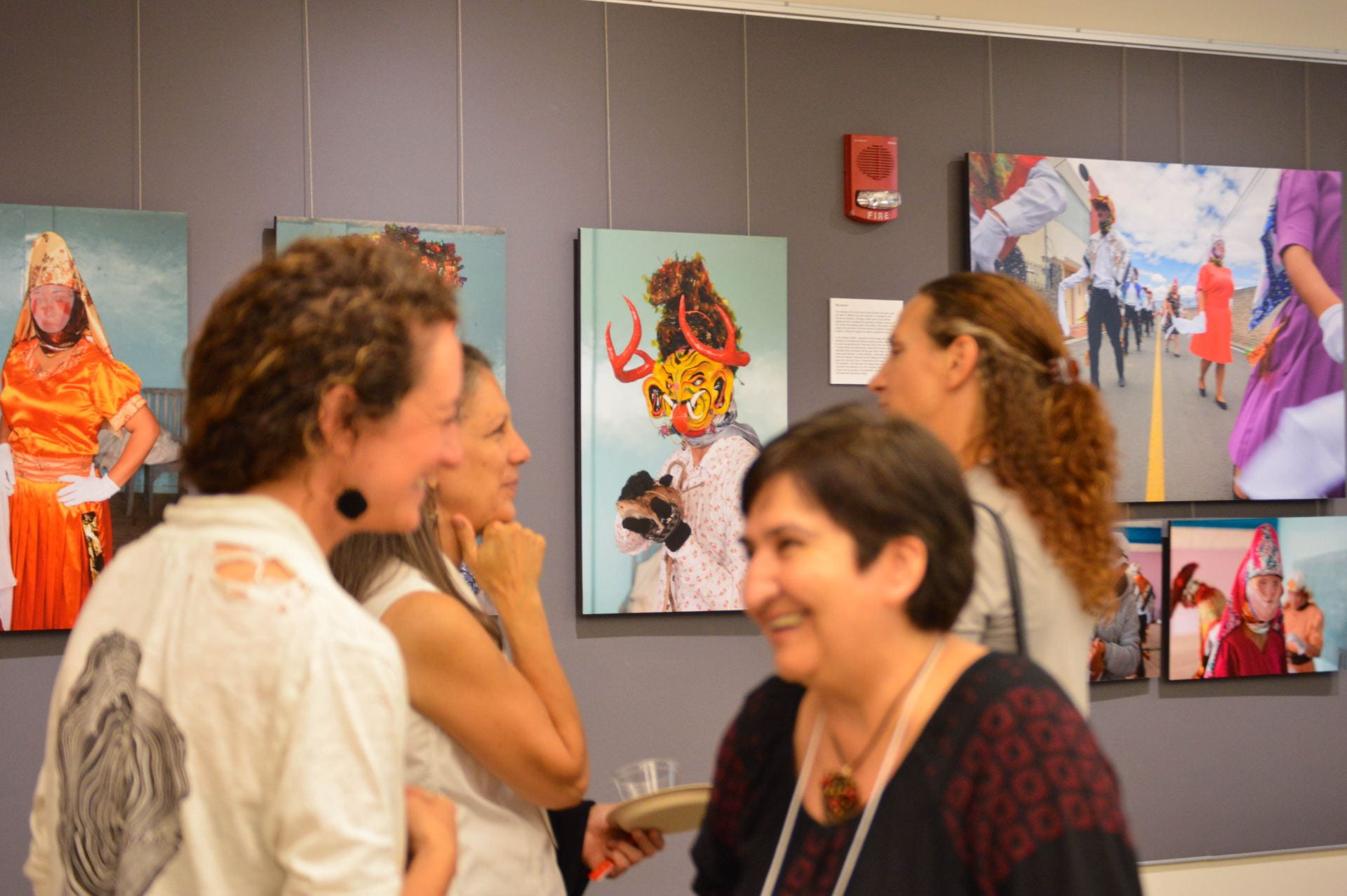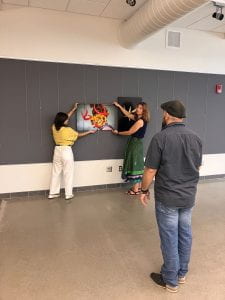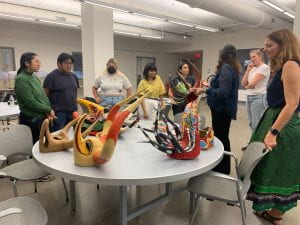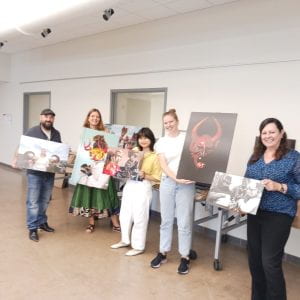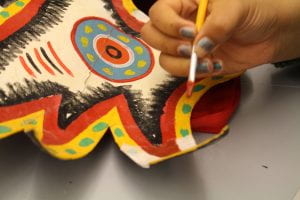In our Forum on Community-Engaged Research on September 28th, Leonardo Carrizo, the photojournalist whose images are featured in the Dancing with Devils: Latin American Masks Traditions, summarized the process of installing the exhibition and engaging with visitors as “building a minga.”
For Carrizo, and the kawsay waqaychaqkuna involved, the intensive month-and-a-half of hanging photographs, unboxing archival materials, printing labels, designing interactive stations, discovering new information, sharing pizza over late night work sessions, and, especially, welcoming visitors into the space embodies the Andean concept of minga, when people within a community come together to help with a project, such as clearing the field after the harvest. Key to the conception of a minga, Carrizo says, is the sense of reciprocity, the understanding that those who are helping you now may call on your support in the future, and the trust in that relationship comes from showing up and contributing your time and your efforts to the tasks at hand.
Others have noted how this “deep bench” of support is essential in implementing and sustaining successful projects. Building a minga is especially important in projects that seek to build community and scholarship, address knowledge inequities and questions of authority, translate across not just languages but cultures and community-academy divides, all while navigating bureaucracies and attempting to balance expectations with individual capacities. Dancing with Devils remains a work in progress, as it deepens and expands through visitor engagement, and we are grateful to be able to continue cultivating this minga together.

Photo by Anna Truax


